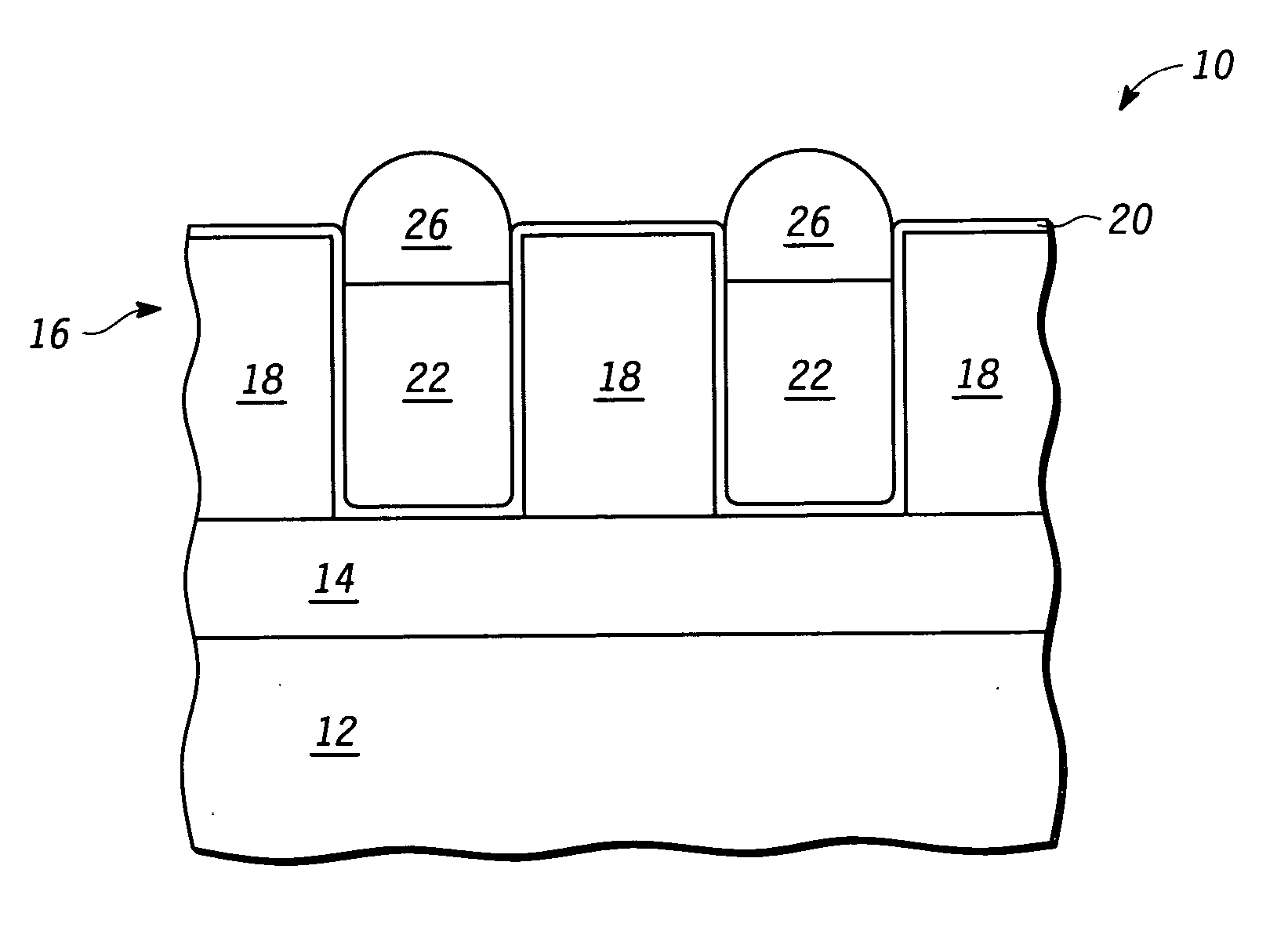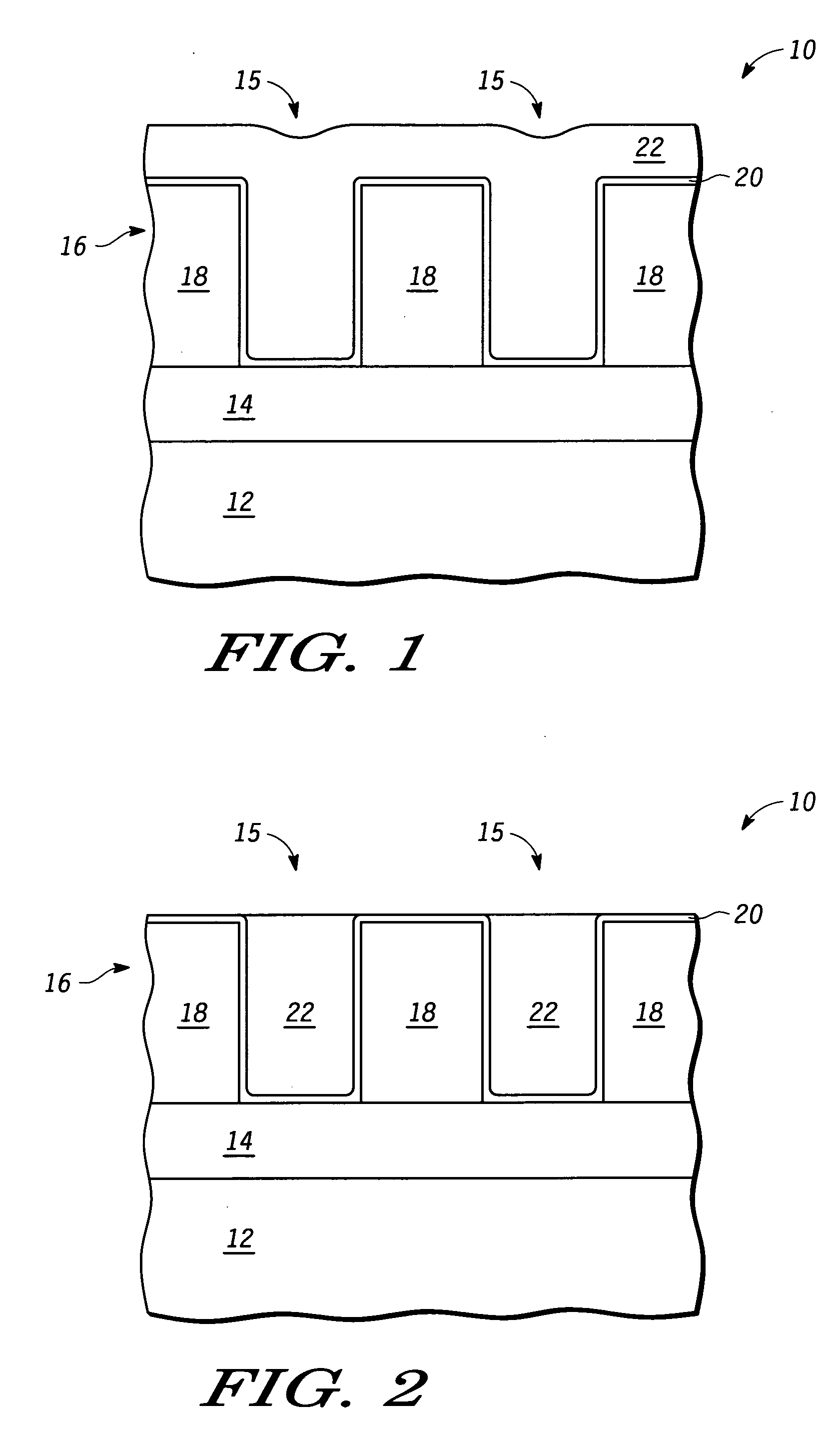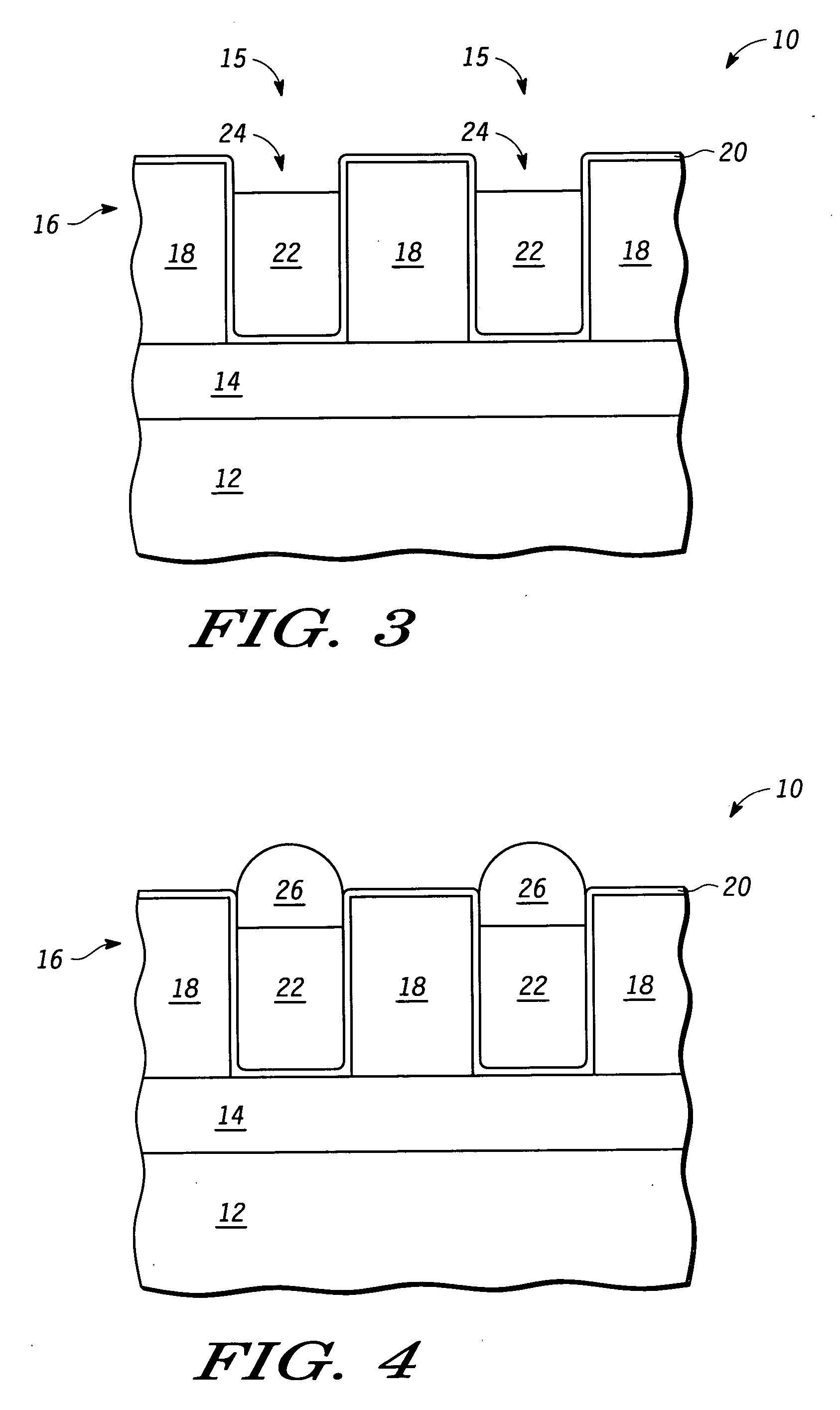Method for forming a capping layer on a semiconductor device
a technology of capping layer and semiconductor device, which is applied in the field of semiconductor devices, can solve the problems of inconvenient capping layer formation, inability to meet the requirements of the device, and relatively rough surface of cobalt film
- Summary
- Abstract
- Description
- Claims
- Application Information
AI Technical Summary
Benefits of technology
Problems solved by technology
Method used
Image
Examples
Embodiment Construction
[0012] Generally, the present invention provides a method for forming a capping layer on top of a conductive metal layer that fills a cavity, such as a via or trench in an interconnect level of a semiconductor device. A purpose of the capping layer is to prevent diffusion of the conductive metal into subsequent interconnect levels within the device.
[0013] An active circuitry layer is formed on a substrate. The interconnect level is formed on top of the active circuitry level by depositing a dielectric layer and patterning the dielectric layer to form cavities, which can be vias, trenches, and the like. A diffusion barrier layer, such as tantalum or tantalum nitride, is deposited over the patterned dielectric layer such that the cavities and the top of the patterned dielectric layer are lined with the diffusion barrier layer. A conductive metal, such as copper, is deposited over the diffusion barrier layer, filling the cavities and forming a blanket film over the patterned dielectri...
PUM
 Login to View More
Login to View More Abstract
Description
Claims
Application Information
 Login to View More
Login to View More - R&D
- Intellectual Property
- Life Sciences
- Materials
- Tech Scout
- Unparalleled Data Quality
- Higher Quality Content
- 60% Fewer Hallucinations
Browse by: Latest US Patents, China's latest patents, Technical Efficacy Thesaurus, Application Domain, Technology Topic, Popular Technical Reports.
© 2025 PatSnap. All rights reserved.Legal|Privacy policy|Modern Slavery Act Transparency Statement|Sitemap|About US| Contact US: help@patsnap.com



